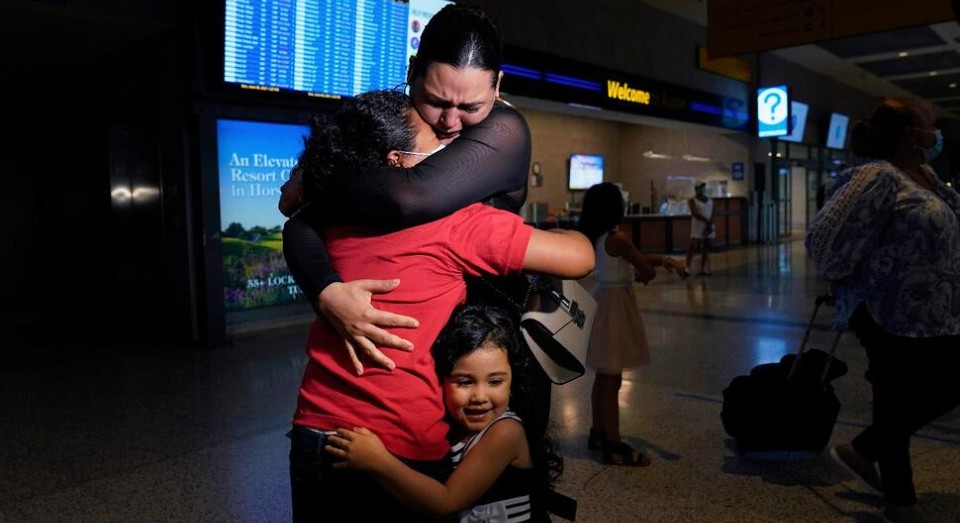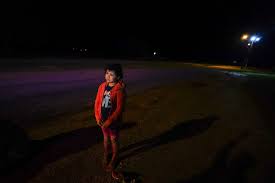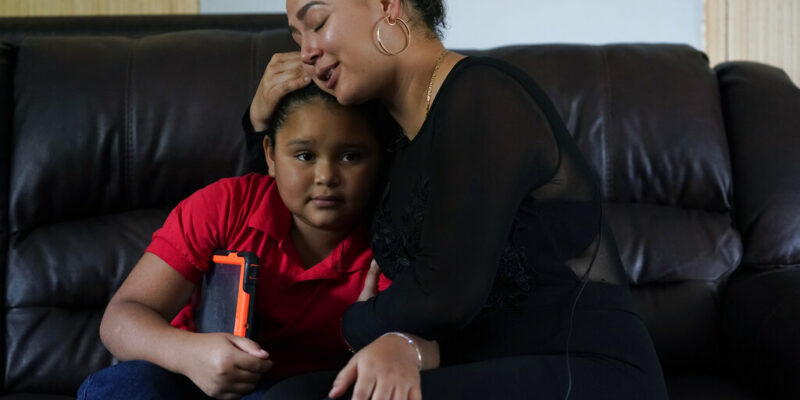Glenda Valdez had kissed her toddler farewell and left for the United States six years before – six years since she had had Emely in her arms.
But there she was, crying as she embraced the little girl she had left behind at Austin-Bergstrom International Airport in Texas. And it was only because she saw a broadcast photo of Emely as part of an Associated Press article on young kids crossing the Mexican border alone that prompted her to act.
She whispered in her 9-year-old daughter’s ear, “I love you so much.” “Thank you, thank you, thank you, thank you, thank you, thank you, thank you
According to Valdez, 26, it was a fairy tale ending — for the time being — to a convoluted story that began in Honduras and with an unpleasant relationship.

Emely said that her father was absent and that he did not provide for them. The girl was left in Valdez’s mother’s custody when Valdez emigrated in search of a better life. Emily’s father, on the other hand, returned her.
Valdez stated she only had occasional contact with her daughter because her father didn’t want them to talk on a regular basis. Valdez would occasionally receive a video call from Emely, who informed her that she had a new stepmother who was not friendly to her.
Emely told her that her father had decided to send her away, without telling her where, because she was unhappy with her existence in that household. He placed her in the care of an adult who assisted her in her trek to the US-Mexico border over the course of many weeks.
Border Patrol agents intercepted Emely at La Joya, on the Texas side of the Rio Grande Valley, about midnight on May 13. She’d been wandering in the brush with a group of strangers for six hours and had lost one of her shoes in the dirt. She was uncontrollably crying.
“I was thirsty and we didn’t have anything to drink,” Emely said in Spanish on Sunday. “I didn’t like it and I didn’t know where I was going.”

When the agents discovered her, she said she had misplaced her mother’s phone number and had no idea where she resided. “Her hair is curly, but she straightens it sometimes,” she told reporters in a desperate attempt to identify her mother. She also wears a lip ring.”
She stated that her mother was expecting her. Valdez, on the other hand, said on Sunday that she had no idea her child had been dispatched to cross the border.
Valdez was watching a Univision newscast at her home in Austin one afternoon in May when she saw the photo of Emely in a red hoodie. She immediately recognized her daughter. Desperate, she began calling US officials, the network, and refugee charities right away.
“I was in disbelief, honestly,” Valdez said. “Imagine you’re watching TV and you suddenly see your kid.” “And then to see her crying and everything she was saying shattered my heart even more, honestly, everything she stated there, that she was angry and crying and all that, and to see her image, barefoot and all that was extremely terrible for me.”
Emely stated that she had been placed in a group home. Valdez, on the other hand, was unaware of this, and she claimed she received only ambiguous responses to her requests for information for weeks. She was told to be patient.
“I was just traumatized,” Valdez said, “and I spent several days crying, watching her video, looking through her photos, and crying, crying, crying.”
Emely was in a government shelter when she got a call last Wednesday. They would soon be reunited. Then she was advised to meet her daughter at the airport the next day on Saturday. She dashed to the bottom of the busy arrivals terminal steps at the specified time to hug her daughter.

Emely is part of a surge in youngsters crossing the border alone from Mexico, with almost 19,000 crossing in March (the highest number on record) and about 17,200 crossing in April (the second-highest). Honduras is second only to Guatemala in terms of the number of unaccompanied children arriving at the border.
The Department of Health and Human Services aims to place unaccompanied children in the “least restrictive environment” feasible, which in the vast majority of cases is a parent or close relative already living in the United States, as dictated by federal law and a decades-old court settlement. At the end of May, it took an average of 35 days to place children in homes; Emely was reunited with her mother after ten days.
Children are usually discharged with instructions to appear in immigration court, where a judge will decide whether or not they are eligible for asylum. The judicial system has a backlog of 1.3 million cases, so decisions can take years.
While Emely waits for her court date, she has moved in with Valdez, her husband, and their two girls, who are eager to meet their new sister, whom they have only met digitally.
Valdez is also reuniting with the little daughter she said goodbye to six years ago, much to her delight.
“Well, the plan is to remain with her here and do all that God desires,” Valdez explained.
“I never want to be apart again.” To pray to God that we never have to be apart again. To offer her all of the love I’ve been unable to provide. Everything she’s been losing out on. To do whatever I can for her and to drive her to school. That she has a better future, and that she may at least make amends for what has transpired.”
Acacia Coronado is a Statehouse News Initiative corps member with the Associated Press/Report for America. Report for America is a non-profit national service initiative that sends journalists in local newsrooms to cover stories that aren’t getting enough attention.
